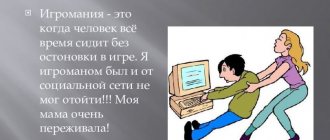A phobia is characterized as an obsessive fear. If a person has phobias, treatment is necessary in order to protect the psyche and be able to adequately perceive the world around him. Every healthy person has a natural defense mechanism against external pathogens (self-preservation instinct). This mechanism is fear. Fear, which manifests itself normally, can warn a person of possible danger. But if there is a fear of something that does not have good reasons, it is often far-fetched and pathological, it is customary to talk about the presence of some kind of phobia. This condition is defined as pathological fear with an inadequate reaction.
Psychiatrists classify such disorders as obsessive-compulsive disorders, which are characterized by disturbances in thinking. Such phenomena tend to appear regardless of human will. A person may be aware of them and not approve of them, but he cannot get rid of them on his own. A phobia is defined as an obsessive fear that has its own boundaries, it relates to specific things or actions, and persists in a person regardless of his attitude towards it. The difference from mental illnesses of this condition is that the person retains consciousness and there is no delusion.
What is fear
Fear is usually called a special psycho-emotional state of a person caused by a real or potential threat. In other words, it is an emotional reaction to danger. Psychologists classify fear as a basic human emotion characterized by a negative connotation. Fear is an unconditional protective instinct that is designed to preserve human life. In this state, a person usually has a desire to hide or run away, which, however, is explained by the main functions of fear. According to experts, fear performs signaling, protective, search and adaptation functions.
Content:
- What is fear
- What is a phobia
- Fear or phobia: how to distinguish
- Is fear of heights normal or a phobia?
- List of the most common phobias
- How are fears and phobias treated?
The limbic system of the brain is responsible for the manifestation of various emotions, including fear. That is, for a person to feel frightened, the brain must perceive what is happening as some kind of threat. He may perceive visual or tactile signals, certain sounds, smells or tastes as danger. But in different situations, the assessment made by the brain may or may not correspond to reality (the danger is exaggerated, reality is distorted).
If fear is a reaction to a real threat, this indicates its functional nature. In such cases, they talk about the so-called healthy fear, which helps to mobilize strength and increase vigilance. The cause of fear can also be far-fetchedness - when a person thinks too much about a possible threat.
Fear can be caused by both internal and external reasons, which can be congenital or acquired. For example, fear can arise as a result of feelings of loneliness or rejection, as well as in cases where a person has a premonition of imminent failure or is aware of his own inadequacy.
As for the intensity of fear, it can manifest itself as confusion, worry, excitement, fear or anxiety. A stronger emotion is expressed in the form of panic or horror, which are considered the most acute forms of fear.
What is a phobia
A phobia is a mental disorder in which a person experiences a painful fear of safe objects or situations. More precisely, it is a pathological fear that is beyond human control and excessive anxiety. This type of fear manifests itself each time as a reaction to a certain situation or a specific object.
Psychiatrists describe a phobia as a strong, obsessive and persistent fear that cannot be described from a logical point of view. A person suffering from a particular phobia tries to avoid certain places, situations, objects or activities.
It is a common belief that it is impossible to control a phobia. However, experts assure that it is possible to overcome panic fear, especially when it is still in its infancy. And they agree: the more time a person lives with a phobia, the harder it is to help him.
Nowadays, experts pay a lot of attention to studying the causes of various phobias. Most researchers recognize that there are usually underlying causes behind phobias.
There are main factors that provoke phobias:
- Biological and genetic reasons. The first include people with congenital reduced synthesis of gamma-aminobutyric acid (GABA), a neurotransmitter that has a calming effect. Also the effects of certain medications, psychoactive substances, chronic stress. Genetically determined phobias occur in families where one of the parents suffers from painful fear and projects it onto the child. But it is impossible to say with certainty what has a greater influence on the appearance of a phobia - genetic predisposition or observation of parental behavior.
- Social reasons. Shocking external influences experienced in childhood and adolescence form phobias in adults. For example, a child (as a joke) was locked in a closet by other children and left there for a long time. An adult may develop claustrophobia (fear of closed spaces). This includes experiencing animal or insect bites, getting lost in a crowd, the threat of drowning, falling from a height, etc.
- Psychological reasons. When there seems to be no traumatic situation, but there is a phobia. In this case, the reasons are hidden in the subconscious. Perhaps these are misinterpreted words and actions, emotional and physical violence that was observed towards the person.
- The experience of mankind is the fear of fire, thunderstorms, water, reptiles, etc.
Causes and factors that can provoke fears
Psychiatry has not yet identified one main reason for such manifestations. It is only known that certain individuals have a predisposition to anxiety-phobic disorders. According to scientists, the main reason is hereditary predisposition. In almost all cases of manifestations of such disorders, there is a family connection from parents to children, and the child receives anxiety to a much greater extent compared to the parents.
An important factor in such processes is education, which consists of instilling in the child his own worldviews and perceptions of the surrounding reality. Such suggestion in the future is reflected in the character and habits of the child, the main features of which are suspiciousness, distrust of others, and excessive suspicion. All this requires the child to consciously constantly control his behavior and situation. At different stages of life, negative stress with varying degrees of severity is inevitable. They can provoke the emergence of obsessive fear, which is already inherent in the child’s psyche, but has not yet manifested itself.
Fear or phobia: how to distinguish
To understand what controls a person: fear or phobia, you first need to determine the nature of his emotion. As already mentioned, fear is inherent in everyone to one degree or another. Fear is an integral part of the instinct of self-preservation, a natural protective reaction of the body, a kind of inhibitory mechanism. It is fear that makes a person more careful and vigilant.
If fear arises without any logical reasons and completely takes over all a person’s thoughts, this is already a phobia. Experts consider this condition as a form of neurosis. In this case, fear haunts the person, poisoning and complicating his life.
The significant difference between both types of fear is the nature of its occurrence. If natural fear is, as a rule, innate in nature, then phobia is always an acquired symptom.
Speaking about the types of fear, it is important to note that, in addition to justified fear (a manifestation of the instinct of self-preservation) and phobia, there is also a so-called unreasonable one, which is often also mistakenly perceived as a phobia.
Intensity of manifestation
Many experts call the intensity of manifestation one of the main differences between phobias and fears. According to this theory, phobias manifest themselves much more intensely than ordinary fear. In most cases, this is true, but if we are talking about unreasonable fears, then the intensity of their manifestation can sometimes even exceed the phobia. In addition, there are real ways to reduce the occurrence of a phobia attack. For example, a person suffering from claustrophobia can take a sedative pill, and a trip on the subway will no longer be the tragedy of his life.
Thus, the intensity criterion is not always appropriate for differentiating different types of startle. Instead, experts advise using other characteristics to distinguish fear, including unfounded fear, from phobia.
Awareness of the illogicality of fear
A study by K. Holstein proved that fear is based on fear. This is a reaction to a sudden, strong stimulus that requires the body to respond in a non-standard way.
One of the criteria for differentiating fear is a person’s awareness/not awareness of the illogicality and groundlessness of the threat that he is trying to avoid due to a feeling of fear. To make it clear what we’re talking about, let’s look at an example.
Let's say a person is afraid to swim in bodies of water, regardless of their type or depth. Ask him why he avoids bodies of water. If in response he tells, for example, a story about how he once almost drowned and now any body of water makes him feel very afraid, then you can be sure: this is an example of typical fear. That is, a person realizes why water causes him to panic. He is afraid of a repeat of the situation from the past. Often a similar thing can be observed in children, moreover, in situations not necessarily related only to water. From the outside, this behavior looks like unreasonable fear, but once you understand the reason for the fear, everything becomes extremely clear. In addition, unreasonable fear is characterized by situationality. It appears as a reaction-response to new or recurring situations. The reason for such fear is not difficult to find in the superficial layers of the human psyche. Being afraid of something, he simply realizes the reality of the threat.
If the reason for the fear of water is a phobia, then the person may never have found himself in dangerous situations in a body of water, but at the same time he is still afraid to swim. If you ask him about the nature of his fear, he will most likely answer that he is aware of the absence of real reasons for fear, but he cannot do anything about his emotions. Although it should be recognized that in some people a phobia can develop as a consequence of experiencing fear. For example, a person may have a panicky fear of cemeteries after a strong fright associated with this place or the deceased. However, not everyone’s fear will develop into a real phobia. Experts are convinced that this only happens when there is favorable soil in the deep layers of the human psyche. That is, the easiest way to understand what worries a person: unreasonable fear or phobia is to ask him why he is afraid.
Nonverbal reactions
As a rule, people suffering from a phobia speak uncertainly and confusingly about the objects of their fear, and their nonverbal behavior only confirms this (the person sweats, his heartbeat quickens, trembling appears, breathing becomes difficult, etc.). At the same time, in the conversation he admits, although not entirely confidently, the absence of a real reason for fear, but, nevertheless, he still panics.
Obsessive fear or phobia
Obsessive fear is often compared to phobia, but there are clear differences between these types of emotions. An obsessive state usually manifests itself in the form of anxiety - groundless and illogical, which resembles a phobia. In turn, many phobias are also often obsessive in nature. However, a phobia is a fairly intense fear caused by a trigger. Obsessive fear manifests itself less intensely, but in this state a person is afraid of almost everything. This is the main difference between these emotions.
Pathological fear or phobia
Pathological fear is quite easy to distinguish from a phobia. A person prone to pathological fear constantly or over a long period of time experiences severe anxiety about a variety of life events. As a rule, this type of fear has no basis in reality and is the fruit of a person’s imagination and excessive emotionality. With pathological fear, a person seems to be “trying on” a potential threat and its consequences.
Advice from a psychotherapist
To get rid of obsessive fears, psychotherapists advise thinking about the following questions. Are you under chronic stress? Are negative emotions prevalent in you? How do you resolve conflicts? Are you avoiding them? What internal contradictions are tearing you apart?
An important step in getting rid of obsessive fears is to accept the idea that you have them, that they are not the norm, and that you yourself cannot cope with them. However, it is also important not to go too far - neurotic people tend to attribute madness to themselves due to obsessive thoughts.
Useful advice from psychotherapists includes the suggestion to reconsider your lifestyle. Add physical activity to your daily schedule to reduce adrenaline levels in the evening. Chat with friends, be frank, discuss your fears with loved ones. It may come as a revelation to you that thoughts similar to yours are also bothering your friend.
Is fear of heights normal or a phobia?
One of the most common fears is the fear of heights. In what cases can anxiety caused by heights be considered a normal emotion, and when is it already a phobia?
Example one. The person understands and does not hide his fear of heights. He will not climb on a stepladder once again, he will always try to entrust window cleaning to someone more courageous, and if he finds himself on an airplane, he will feel very uncomfortable and will definitely choose a seat away from the window. In this case, the reason for fear has a logical explanation. Each of the situations described involves some degree of risk to life or health. But as soon as the potentially dangerous situation disappears, the anxiety and feeling of fear also disappear.
Example two. A person is terribly afraid of heights, and not only at the moment when he finds himself on the same stepladder or on an airplane. A wave of fear covers him at the very thought of heights. By the way, uncontrollable fear, as a rule, makes significant adjustments to a person’s life. For example, a panicky fear of heights becomes the reason why a person travels only by land transport. Also, such people quite often do not rise above the 2nd floor. You won’t see them on the balcony of a high-rise building; it can be problematic for them to even look out the window of an apartment located on the 3rd or 4th floor.
Unlike the person in the first example, for whom height is, although uncomfortable, not “deadly,” in the second case everything is much more complicated. A person with an uncontrollable fear of heights falls into stupor at the very thought of the source of panic. His heart rate increases, limb tremors, dizziness and heavy sweating appear. Comparing the two examples, one can understand that in both cases people are afraid of heights, but the nature of their fear is significantly different. The first case is a classic example of ordinary fear. The second example is a typical manifestation of a phobia. By the same principle, by analyzing what is behind a person’s emotion, one can determine where is ordinary fear and where is phobia.
The following table will help you clearly understand all the subtleties of the difference between natural fear and phobia.
Comparison chart of fear and phobia
| Fear | Phobia | |
| Nature of occurrence | Innate emotion | Acquired symptom |
| What is this | Basic emotion of a healthy person | One of the types of neurosis (mental deviation) |
| Why does it occur | Defensive reaction, manifestation of the instinct of self-preservation | Unfounded fear |
| What processes in the body does it trigger? | Activates a person, makes him run away or hide (defend himself) | Drives you into a stupor |
| How long does it last | Characterized by immediacy (fear is here and now) | Pursues a person constantly in a variety of situations |
| How does it affect life? | Helps avoid dangers | Makes a person’s life difficult, controls his actions and plans |
| Mindfulness | A person understands what he is afraid of | A man cannot explain what he is afraid of |
| Depth of symptoms of fear | Superficial layers of the psyche | Deep layers of the psyche |
Symptoms
A phobia is an obsessive, powerful and all-consuming feeling of panic fear. Some people ask a curious question - do I have a phobia, and often the answer to this is not so simple. A completely balanced person, unaware of the presence of this condition, during a phobic stimulus will not only experience an actual feeling of fear, but also unpleasant physical sensations throughout the body, profuse sweating, especially in the palms and forehead, will become painfully pale or severely prolonged trembling. There are often cases when an attack of phobic fear is accompanied by skin rashes and redness.
List of the most common phobias
It is impossible to make a complete and definitive list of all phobias. Today, psychiatrists and psychologists around the world know about more than 500 phobias. But their number is constantly growing.
The most common:
- arachnophobia – fear of spiders;
- ophidiophobia – fear of snakes;
- acrophobia – fear of heights;
- agoraphobia – fear of open space;
- nyctophobia – fear of the dark;
- gerontophobia – panic at the thought of old age;
- glossophobia – fear of public speaking;
- astraphobia - fear of thunderstorms with lightning and thunder;
- trypanophobia – fear of injections;
- pteromerchanophobia – fear of flying;
- claustrophobia - fear of small rooms, elevators, and even tight clothing;
- mysophobia – fear of germs and dirt;
- Thanatophobia – panicky fear of death;
- monophobia (autophobia) – fear of loneliness;
- kakorraphiophobia – fear of failure;
- acoustic phobia – panic caused by loud sounds;
- algophobia – fear of pain;
- hemophobia – fear of blood;
- Gephyrophobia – fear of bridges;
- Hylophobia – panic caused by the forest.











